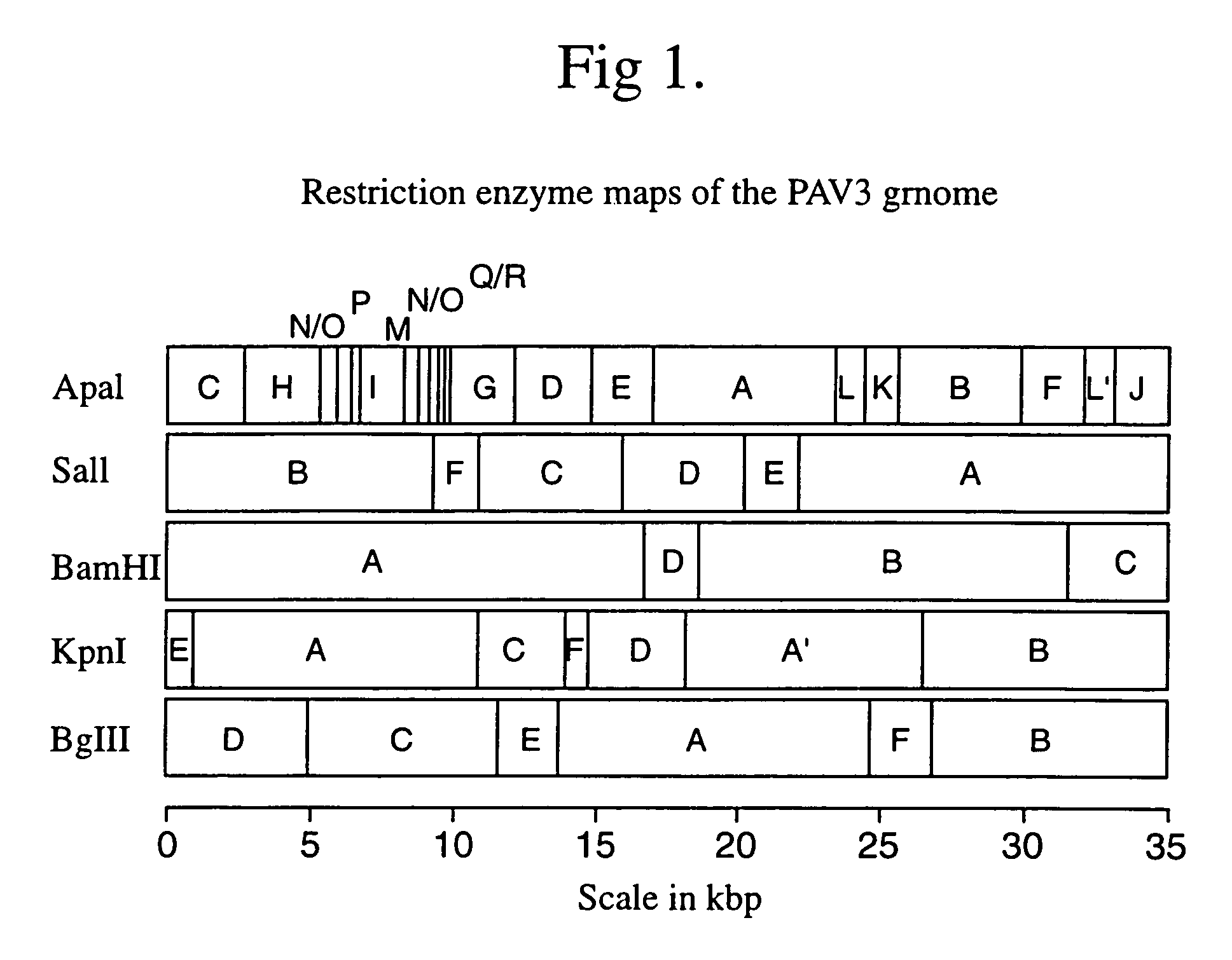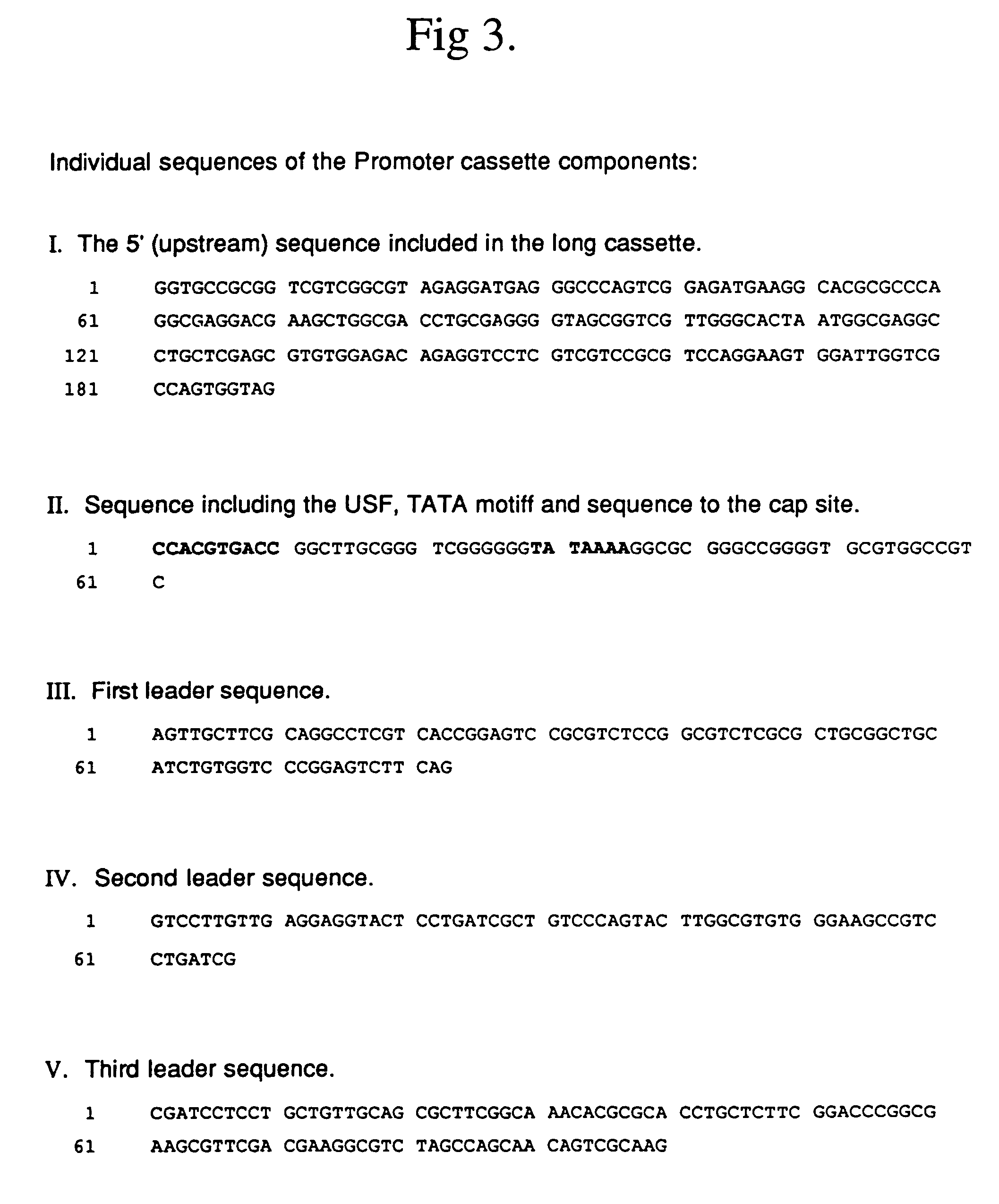Recombinant porcine adenovirus vector
a technology of adenovirus and adenovirus, which is applied in the direction of aerosol delivery, immunological disorders, drug compositions, etc., can solve the problems of high cost per animal in terms of feed and current disease control costs, the cost of disease prevention and control by any new vaccine must be cheap, effective and easy to deliver, and the vector cannot be suitable for the delivery of other antigens, etc., to achieve the effect of easy insertion into the pav genom
- Summary
- Abstract
- Description
- Claims
- Application Information
AI Technical Summary
Benefits of technology
Problems solved by technology
Method used
Image
Examples
Embodiment Construction
[0087]Aspects of preferred embodiments of the invention based on PAV isolates serotype 3 and serotype 4 will now be described. Whilst these two isolates have been selected because of their sites of infection in the pig, it will be appreciated that other isolates of porcine adenovirus may be more suitable for construction of vaccine vectors provided the criteria for selection described herein before are met.
[0088]In general, PAV are considered of low pathogenicity with little consequence in the field. The pathogenic significance of PAV is reviewed in Derbyshire, 1989. The first report of isolation of PAV was from a 12 day old pig with diarrhoea (Haig et al., 1964). Two years later, PAV type 4 was first reported, isolated from the brain of a pig suffering from encephalitis of unknown cause (Kasza, 1966). Later reports have associated PAV mainly with diarrhoea in the field although this is normally low grade. PAV can also be regularly isolated from healthy animals with no disease signs...
PUM
| Property | Measurement | Unit |
|---|---|---|
| temperatures | aaaaa | aaaaa |
| stress | aaaaa | aaaaa |
| size | aaaaa | aaaaa |
Abstract
Description
Claims
Application Information
 Login to View More
Login to View More - R&D
- Intellectual Property
- Life Sciences
- Materials
- Tech Scout
- Unparalleled Data Quality
- Higher Quality Content
- 60% Fewer Hallucinations
Browse by: Latest US Patents, China's latest patents, Technical Efficacy Thesaurus, Application Domain, Technology Topic, Popular Technical Reports.
© 2025 PatSnap. All rights reserved.Legal|Privacy policy|Modern Slavery Act Transparency Statement|Sitemap|About US| Contact US: help@patsnap.com



